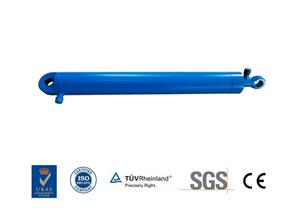Sheet metal fabrication process
Depending on the difference in sheet metal fabrication parts construction, the process flow can vary, but the overall does not exceed the following points.
1. Material cutting: There are various ways of cutting, mainly in the following ways
a. Shearing machine: Used for simple strips or plates cutting. It is mainly used for the blanking and forming of molds. The cost is low and the precision is less than 0.2mm, but only the strips or blocks without holes and chamfers can be processed.
b. Metal stamp: It is a punching machine that divides the parts after the parts are cut in one or more steps. It has the advantages of short working time, high efficiency, high precision, low cost and high volume consumption, but you have to design and invest the mold for stamping parts.
c. NC cutting, NC cutting must write a CNC parts processing program, which can be applied in NC stamping machine, so that it can be punched out on the flat plate according to these programs. The shape of the flat piece, but the custom metal parts shape is limited by the tool construction. The cost is low. The accuracy is 0.15mm.
d. The laser cutting method is to cut the custom metal parts shape on the large flat plate. The same as the NC blanking, the laser program needs to be written. It can be used for various complicated shapes of the flat piece. The cost is high and the precision of laser cutting service is 0.1mm.
e. Sawing machine: mainly used aluminum profile parts, square tube parts, tube parts, round bar parts, etc., low cost and low precision.
2.countersunk, tapping, reaming, drilling
Normally the counter bore angle is 120° for pull rivets, 90° for countersunk screws, and tapping for inch bottom holes.
3. Flanging: Also called punching and turning, it is to draw a slightly larger hole on a smaller base hole, and then tapping. It is mainly processed with sheet metal with a thinner thickness, increasing its strength and number of threads to prevent slipping. The normal shallow flange of the hole is not changed at all. When the thickness is reduced by 30% to 40%, it can be 40% to 60% higher than the normal flange height. When the thickness is reduced by 50%, the maximum flange height can be obtained. When the thickness is large, such as 2.0mm, 2.5mm or more, the thickness can be directly tapped.
4. Punch: It is a processing process that uses mold forming. Punching machine is normally used for hole punching, chamfering, blanking, punching convex (bump), forming and other processing methods. The mold must be used to complete the operation, such as punching blanking die, convex die, tearing die, hole punching die, forming die, etc., and when operating, mainly pays attention to position and orientation.
5. Pressing riveting: There are rivet nuts, screws, loose plugs, etc., which are finished by hydraulic riveting machine or punching machine, riveted to sheet metal fabrication parts.
6. Bending; bending is the folding of a 2D flat piece into a 3D part. The processing needs a bending machine and the corresponding bending mold. The principle is that the first bending without intervention for the next bending.
The number of bends: T<=3.0mm, 6 times the steel plate thickness to calculate slot width, such as: T=1.0, V=6. 0 F=1.8, T=1.2, V=8, F=2.2, T=1.5, V=10, F=2.7, T=2.0, V=12, F=4.0
Bending machine mold classification, straight knife, machete.
When aluminum parts are bent, there is a crack, which can increase the width of the lower die to increase the upper die radius (annealing can prevent cracks).
When bending: Pay attention to steel plate thickness, bending direction, bending angle, bending size and appearance. Chrome-plated parts are not allowed to have creases.
The relationship between bending and riveting process. Normally, riveting first, then bending. but if after riveted, the custom metal parts have conflicts, we need to bend first, then rivert.
7.Welding:
a. Classification: argon arc welding, CO2 welding, gas welding, manual welding, spot welding, butt welding, bump welding, electric chrome welding, copper wire welding.
b. Welding method: CO2 gas arc welding, argon arc welding, spot welding, robot welding
The selection of welding method is based on the requirements of the practice and the material. Generally, CO2 welding is used for iron parts plate welding; argon arc welding is used for welding stainless steel parts and aluminum parts. Robot welding arm can save time, improve working efficiency and welding quality, reducing work intensity.
c. Welding symbols: Δ fillet weld, Д, I weld, V weld, single V weld (V) V-weld with blunt edge (V), spot weld (O), plug weld or groove weld (∏) , crimping (χ), single-sided V-weld (V) with blunt edge, U-weld with blunt, J-weld with blunt, back-sealing, welding
d. arrow lines and connectors
e. Welding loss and its prevention measures
Spot welding: increasing welding area for stronger strength.
CO2 welding: high consumption rate, low energy consumption, low cost, strong rust resistance
Argon arc welding: shallow depth of dissolution, slow welding speed, low efficiency, high cost, tungsten defects, but good welding quality, can weld non-ferrous metal parts, such as aluminum parts, copper parts,bronze parts, magnesium parts and so on.
f. Reasons for welding deformation: lack of preparation before welding, need to increase tooling.
g. Welding deformation alignment method: flame alignment, vibration alignment, hammering alignment, artificial alignment.




